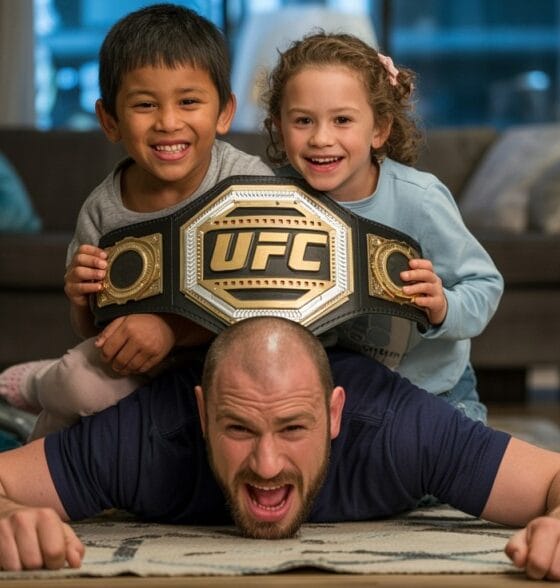Gentle Parenting on the Outside, Burning Out on the Inside.

Quick Summary:
Gentle parenting is about connection, boundaries, and emotional growth, not permissiveness. Here’s one dad’s real story of staying calm during a public meltdown (barely).
Gentle Parenting, When It’s Anything But Easy
Gentle parenting sounds beautiful on paper. Peaceful. Empathetic. Respectful. But sometimes, it looks like this:
Your three-year-old is in the middle of a full-scale meltdown because you won’t let him open the car door while it’s moving.
M-O-V-I-N-G.
You and your partner breathe deeply, hang in there for more than 15 minutes, and finally park in front of the restaurant the family is going to.
He’s kicking and screaming like you just cancelled Paw Patrol.
Or worse, announced that dessert is now exclusively broccoli.
People are watching.
You try reasoning. Validating. Breathing.
Thirty minutes go by. Still no resolution.
Inside, you’re screaming:
“Just pick him up. Drag him in. Enough!”
But you don’t.
You wait. You talk. You swallow the frustration.
On the outside: calm, grounded, gentle parenting.
On the inside? A herd of angry buffalo held by nylon threads.
This true story (yes, it happened) isn’t about perfect parenting.
It’s about trying, really trying, to choose empathy when everything inside you wants efficiency.
Because that’s what gentle parenting is.
It’s not soft. It’s not permissive.
It’s choosing connection over caveman instincts.
What Is Gentle Parenting? (And No, It’s Not Letting Chaos Reign)
Gentle parenting is a respectful, evidence-based approach that focuses on empathy, harmony, and clear boundaries.
Even if your kid is currently behaving like a caffeinated gremlin.
At its core, gentle parenting is about treating your child like a whole person, with big emotions, developing brains, and a desperate need to feel heard. That doesn’t mean you give in. It means you guide instead of punish, and listen instead of lecture (at least most of the time).
Now, let’s clear something up:
Gentle Parenting vs. Permissive Parenting
According to StatPearls / NCBI, one of the most important distinctions in parenting styles is between authoritative (which aligns with gentle parenting) and permissive approaches.
Let’s get something straight:
Gentle parenting is not the same as permissive parenting.
They may sound similar—both talk about empathy and emotions—but they lead to very different outcomes.
Gentle parenting uses connection, communication, and consistency to guide behaviour.
Permissive parenting avoids conflict, often sacrificing clarity and structure to keep the peace in the short term.
In other words, one raises emotionally intelligent humans. The other raises the kind of clients who always ask to speak to the manager.
Want to Read More from the Experts?
Here are two solid breakdowns worth bookmarking:
- Buzzwords Explained: What is Gentle Parenting – ZERO TO THREE
- Is Gentle Parenting Best? – ParentData by Emily Oster
Gentle Parenting Tips (That Work Even When You’re Functioning on Fumes)
So you’ve decided to take the high road. The peaceful path. The gentle parenting route.
Good news: it’s incredibly rewarding.
Bad news: your kid missed the memo and is still in full feral mode.
Here are some practical tips for when your child is melting down, your blood pressure’s climbing, and you’re questioning every life choice that led to this moment.
Yes, including the one where you didn’t use a condom.
1. Stay Calm
No, you don’t have to be a monk. But your kid’s nervous system is tethered to yours, so if you escalate, they will, too.
“Reacting with anger and frustration is likely to further distress the child rather than help him calm and cope.”
So before you respond, take a second. Breathe. Count the napkins. Hum the national anthem. Whatever keeps you grounded.
2. Acknowledge the Feelings
You don’t have to agree. Just let them know you get it.
“You really wanted to open the door yourself. That felt important to you.”
This doesn’t magically stop the tantrum, but it builds trust. Eventually, that trust will become the foundation for emotional regulation.
3. Set Clear Boundaries
Gentle parenting is NOT “anything goes.”
It’s “I love you, and the answer is still no.”
Be consistent. Explain why. And yes, repeat yourself. A lot.
(Your child heard you. They’re just hoping you’ll fold.)
4. Offer Controlled Choices
Kids are small humans. And humans love feeling in control.
Try:
“You can hop out of the car by yourself, or I can help.”
“You can wear the red hoodie or the blue one.”
This small bit of autonomy can defuse big emotions.
5. Reflect and Repair
You’re going to mess up. You’re going to snap. That’s parenting.
What matters is coming back. Saying,
“I got frustrated earlier. I’m sorry. Let’s try again.”
This not only teaches accountability; it models what emotional growth looks like.
P.S. The Science Has Your Back
According to StatPearls / NCBI, children raised with authoritative parenting (which aligns closely with gentle parenting) tend to show better emotional resilience, stronger social skills, and healthier long-term outcomes than kids raised under permissive or authoritarian styles.
Translation? This is hard work. But it’s worth it.
Conclusion: Embracing the Journey
Gentle parenting is a continuous journey of growth for both parent and child. It’s about striving for understanding, even when patience wears thin. By acknowledging our challenges and committing to empathetic guidance, we lay the foundation for resilient, emotionally intelligent children.
TL;DR: What Gentle Parenting Really Looks Like
- Gentle parenting is all about empathy, boundaries, and emotional connection—not chaos or “anything goes.”
- It’s different from permissive parenting, which often avoids conflict but sacrifices structure.
- Staying calm during meltdowns isn’t easy, but it models emotional regulation better than any lecture or time-out ever could.
- Core strategies include: validating feelings, setting limits, offering choices, and repairing when things go sideways.
- In short? One approach raises emotionally intelligent humans. The other raises the kind of clients who always ask to speak to the manager.
Felt This Kind of Chaos Before?
Share your story, vent, or just say “same” by emailing me at hello@dadinpanic.com
Want more real dad stories, science-backed strategies, and zero fake guru advice?
Join the newsletter.
References:
- An exploration of the meaning of gentle parenting – PubMed
- Positive Parenting Improves Multiple Aspects of Health and Well-Being | PMC
- Positive Parenting and Early Childhood Cognition: A Systematic Review | PMC
- StatPearls / NCBI
- Buzzwords Explained: What is Gentle Parenting – ZERO TO THREE
- Is Gentle Parenting Best? – ParentData by Emily Oster
Frequently Asked Questions
Gentle parenting aligns with the authoritative style, which has a strong evidence base. Kids raised with this approach show better emotional resilience, social skills, and long-term well-being.
Yes, but it takes Jedi-level patience. You stay calm, validate feelings, and hold boundaries even when everyone’s watching. It’s less about “winning” the moment and more about modelling emotional regulation for the long haul.
Great starting points:
- The Whole-Brain Child by Daniel J. Siegel
- Good Inside by Dr. Becky Kennedy
- Gentle Parenting by Elizabeth Ray







1 Comment